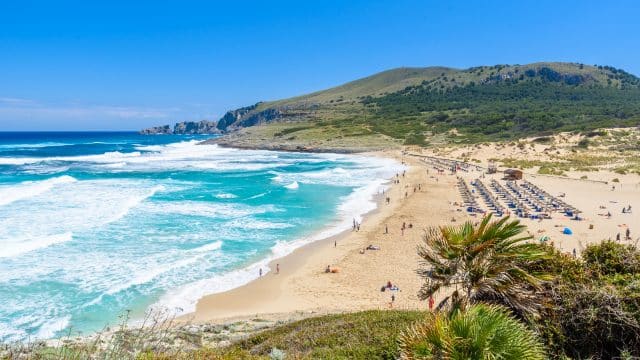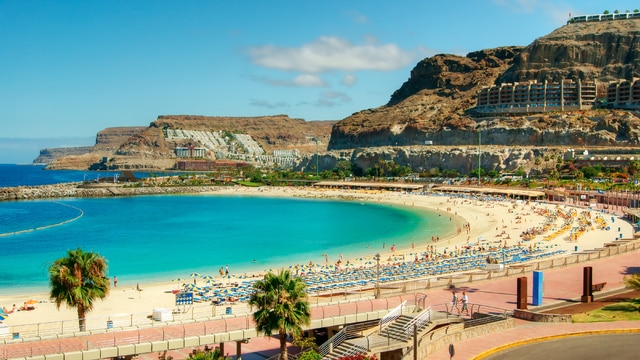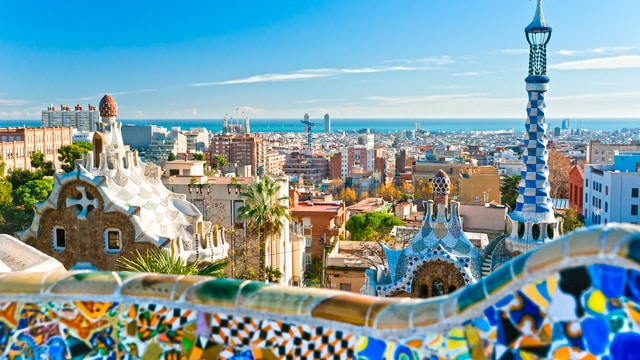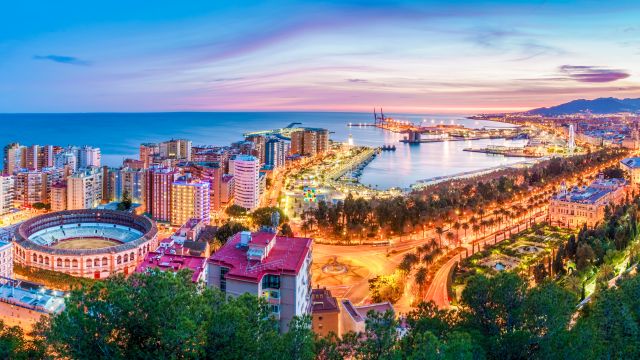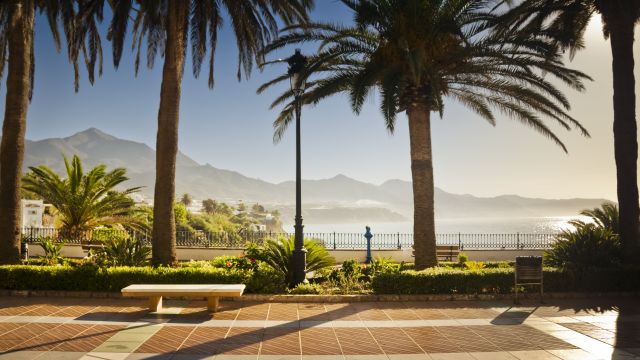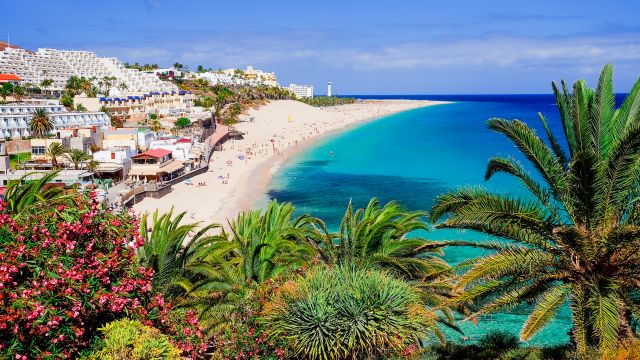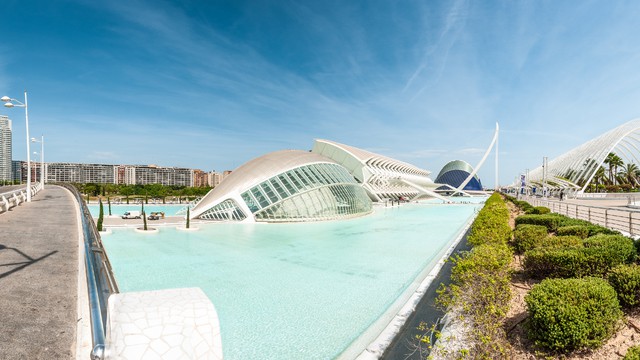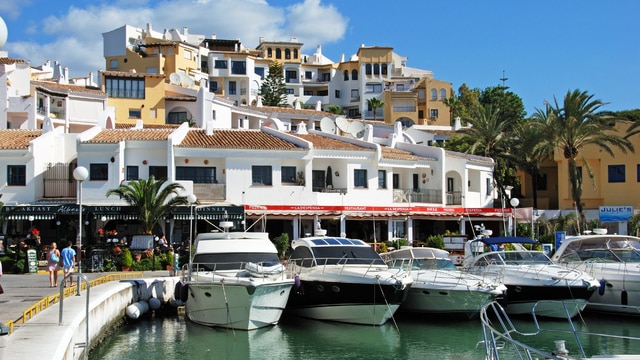What’s the climate like in Zuid-Spanje?
The current climate of Zuid-Spanje features average monthly temperatures ranging from highs of 34°C during the day to lows of 17°C. The average yearly temperature is around 25°C. At night, temperatures in the colder months average around 7°C and in the warmer months around 22°C.
The highest temperature recorded in Zuid-Spanje in recent years was 43°C in July 2023. The lowest daytime temperature recorded was 8°C in January 2021.
On average, Zuid-Spanje receives 382 mm of precipitation each year. For comparison, UK gets 701 mm of precipitation annually.
Curious about the climate in other parts of Spain? Check out the weather and climate in places like Ibiza, Majorca, Tenerife, or have a look at other destinations in Spain.
Best time to visit Zuid-Spanje?
The best time to go for a sun holiday to Zuid-Spanje is February through December. During this period, you'll have good temperatures and not too much rain, making it a great time to visit Zuid-Spanje. In the other months of the year, there's too much rain or the temperature isn't ideal for a visit if you want sunny and pleasant weather.
Climate Table of Zuid-Spanje
The climate table of Zuid-Spanje shows the average temperatures, precipitation, and UV index per month. The table gives an overview of the average day and night temperatures in degrees Celsius, the total amount of precipitation in millimetres, the total snowfall in centimetres, and the UV index for each month. Precipitation is always measured as water, even if it's snow or hail.
Click on the month name to see more weather details, like daily averages, temperatures, and precipitation for the past years in that month.
- Average yearly temperature: 25°C
- Highest temperature: 34°C in August
- Lowest temperature: 17°C in January
- Precipitation: 382 mm per year, averaging 32 mm per month
- Driest months: 0,1 mm in July, 0,7 mm in August and 3,4 mm in June
- Wettest months: 79 mm in March, 55 mm in November and 51 mm in January
Average Temperature per Month in Zuid-Spanje
This graph shows the average maximum temperatures per month in Zuid-Spanje, Spain. The temperatures are shown in degrees Celsius and the average is calculated based on the recorded temperatures per month from past years.
Average Precipitation per Month in Zuid-Spanje
This graph shows how much precipitation Zuid-Spanje, Spain, gets on average per month. Precipitation is always measured as water, even if it's snow or hail. This makes it easy to compare how much has fallen, regardless of the form of precipitation. The amount of precipitation is measured in millimetres and the average is calculated based on the recorded precipitation per month from past years.
Average UV Index per Month in Zuid-Spanje
This graph shows the average UV index per month in Zuid-Spanje, Spain. The UV index indicates the intensity of ultraviolet radiation and ranges from 0 to a maximum of 11.
Yearly Temperature in Zuid-Spanje
This graph shows the average yearly temperature in Zuid-Spanje, Spain. The yearly temperature, expressed in degrees Celsius, is the average of all twelve monthly temperatures summed up for that year.
Total Yearly Precipitation in Zuid-Spanje
This chart shows the total yearly precipitation in Zuid-Spanje, Spain, over the past few years. The total yearly precipitation, measured in millimetres, is the sum of all the rain that fell in the twelve months of that year.
More Climate Info About Zuid-Spanje
Southern Spain offers a Mediterranean climate that attracts tourists from all over the world. This area feels like a Mediterranean paradise, thanks to its perfect weather conditions. It is a region known for its many hours of sunshine, Spanish culture and rich history. There is more than just sun, sea and sand. It is a crossroads of civilisations, a place where Moorish, Christian and Jewish influences merge in architecture, art and cuisine.
Discover the historic splendour of Seville, with its famous cathedral and the Alcázar. Enjoy bustling streets in Málaga, the birthplace of Picasso. Go sunbathing on the idyllic coastline of the Costa del Sol. Or experience the rugged charm of Sierra Nevada. Southern Spain is a mosaic of unforgettable destinations that combine to form the unique soul of the region.
The Mediterranean climate in southern Spain
The heart of southern Spain's appeal lies in its Mediterranean climate, characterised by hot, dry summers and mild, humid winters. Temperatures in summer can sometimes easily exceed 40°C. Particularly in urban jewels such as Sevilla, Málaga, Granada and Córdoba, making the region an unmissable destination for sun worshippers. The Mediterranean climate makes southern Spain an ideal destination all year round.
The summer season brings more than just heat. It also offers a chance to enjoy vast sandy beaches and lively festivals that highlight the region's cultural richness. From the Semana Santa, the holy week before Easter, to the Feria de Abril in Seville, these festivals offer a glimpse into the soul of Andalusia. The region is also known for its gastronomy, where olive oil, Iberian ham and sherry take centre stage.
In contrast, winters are mild and pleasant, with temperatures rarely dropping below 7°C. This period is ideal for those who want to avoid the crowds and experience the authentic charm of southern Spain, from its tranquil coastlines to its historic centres that tell a story of a rich and varied past.
The Terral and Calima winds
The Terral and Calima are two weather phenomena that make southern Spain's climate unique. The Terral, a warm, dry wind from the mountains, can suddenly raise temperatures in the region of Málaga and the Costa del Sol, resulting in extreme heat during the summer months. This makes cooling down difficult both during the day and at night.
The Calima brings hot, dry winds from the Sahara into southern Spain and the Canary Islands, with fine sand and dust causing reduced visibility and an orange-like glow in the air. This phenomenon can affect air quality and cause respiratory problems, in addition to a temporary increase in temperature and dryness.
The enchanting cities of southern Spain
Sevilla is famous for its Gothic cathedral, the largest Gothic building in the world, and the Real Alcázar, a royal palace that is still in use. The city also plays a crucial role in the history of opera and is home to flamenco, an expressive dance that is part of humanity's intangible cultural heritage.
Málaga is not only the birthplace of Picasso but also a city that has undergone a renaissance, with modern museums, a lively port and restored historic districts. It is a city where ancient traditions and contemporary culture go hand in hand.
In addition to its cultural treasures, southern Spain also offers breathtaking natural landscapes. The Costa del Sol is famous for its golden beaches and luxury resorts, while the Sierra Nevada invites visitors to explore its rugged terrain, whether skiing in winter or hiking in summer.
Best Time to Visit Zuid-Spanje
When it's best to visit southern Spain depends on what you are looking for and what your plans are. This slice of paradise in Europe transforms with the seasons. Whether you come for the long sandy beaches, the rich Spanish culture, nature in full bloom, or want to experience the serene beauty of winter, there is a perfect time for your visit.
Strand
For beach fans, the summer months of June to September are prime. Expect long sunny days with the temperature often above 30 degrees Celsius.
The sea is then between 20 and 24 degrees perfect for all kinds of water fun. Coastal towns are full of life then with plenty of festivals highlighting local culture.
Culture
If you are more for culture and want to explore the region, spring and autumn are your time. In April May September and October average 20 to 25 degrees is ideal weather for travelling around checking out historical sites and sampling local cuisine without the heat or crowds of summer. Those months really are perfect for experiencing the versatility of southern Spain.
Nature
Nature lovers will also appreciate spring and autumn. Nature then explodes in colour from spring's orange blossoms to autumn's golden hues. It is also a top time for birdwatching especially in Doñana National Park where many migratory birds land.
Winter
Winter is quietest on the coast from December to February. Still, it has its charms for those who want to avoid the crowds or explore Andalusian cities like Seville Cordoba and Granada.
The temperatures are mild by European standards usually between 10 and 17 degrees ideal for city tours and joining in winter festivities. For winter sports lovers, there is skiing and snowboarding in the Sierra Nevada unique so close to the Mediterranean.
Weather experiences in Zuid-Spanje
Have you been to Zuid-Spanje?
Share your weather experiences in Zuid-Spanje.
Average Weather in Zuid-Spanje by Month
Click on a month below to see detailed weather info for Zuid-Spanje. Based on historical weather data, you can see the average temperature, precipitation, wind, and UV index for each day of the month.


